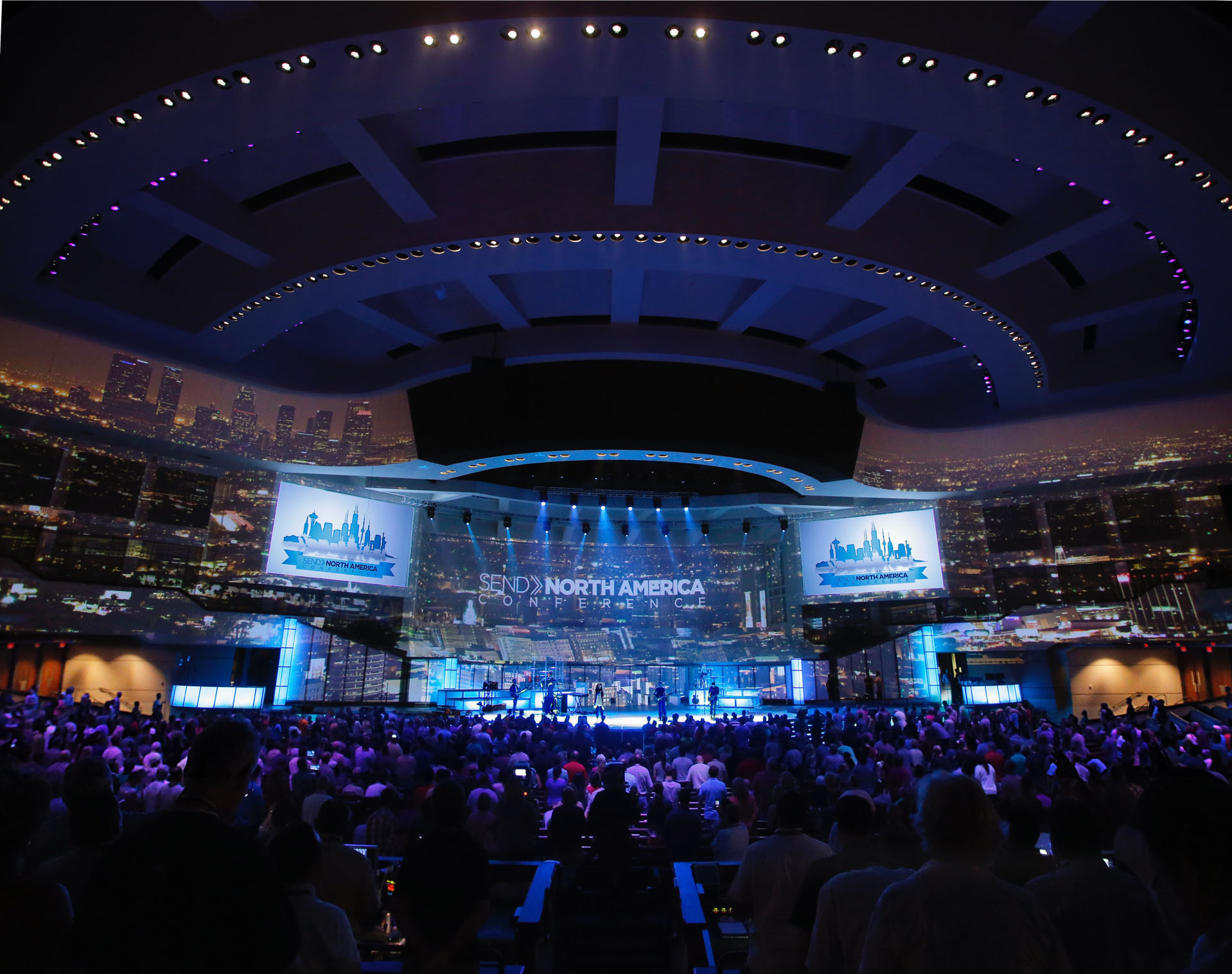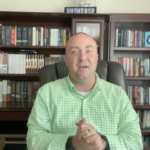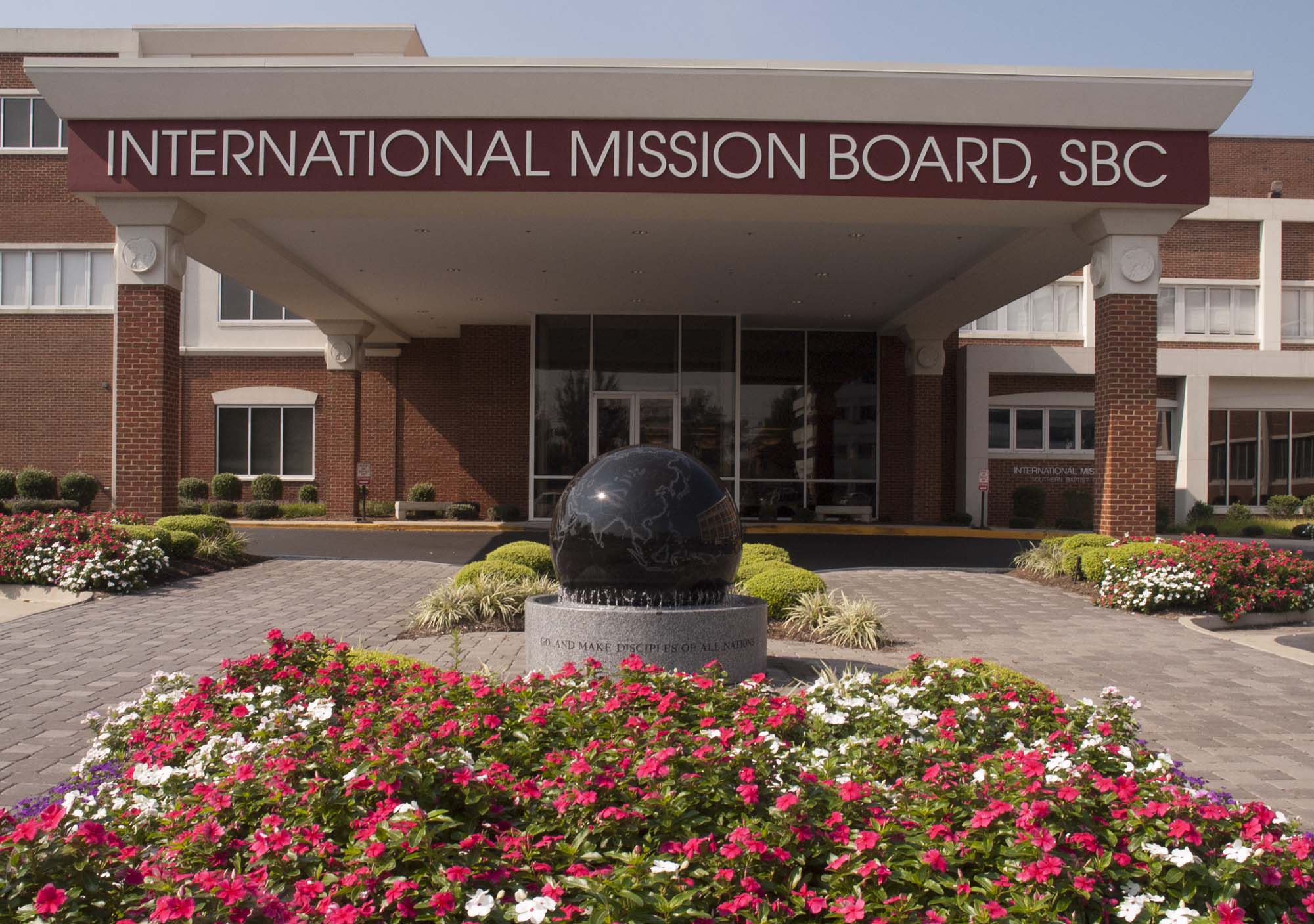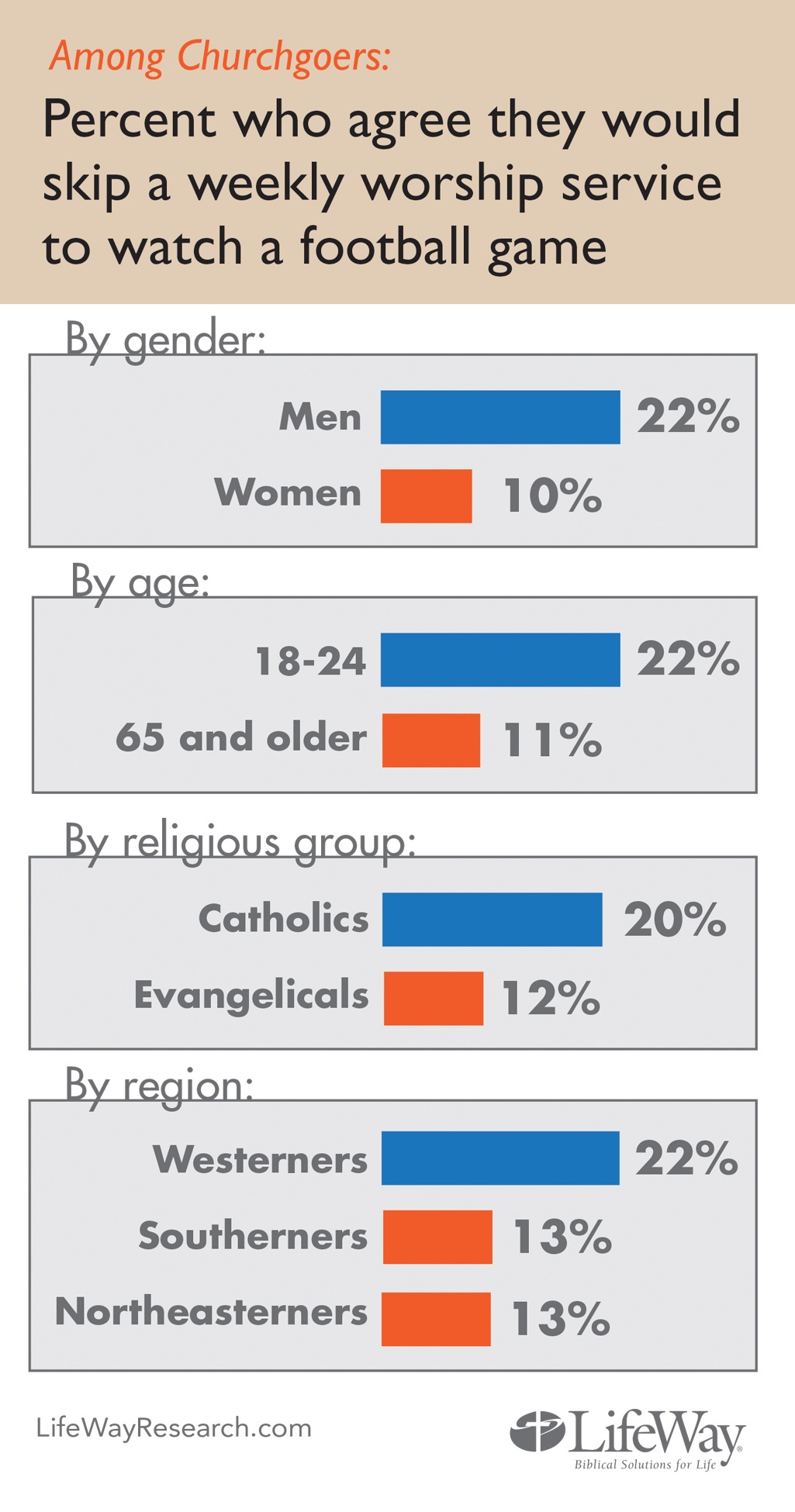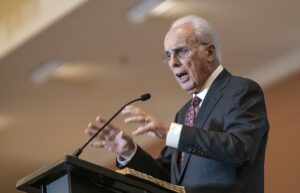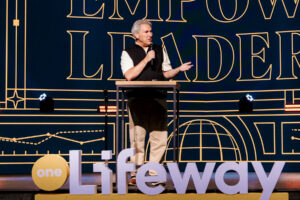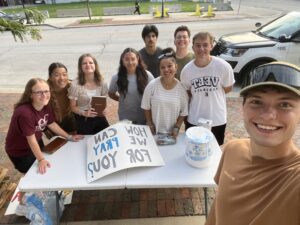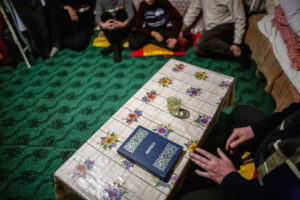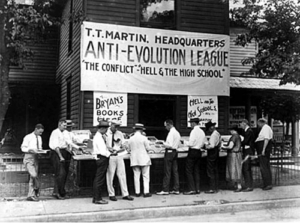
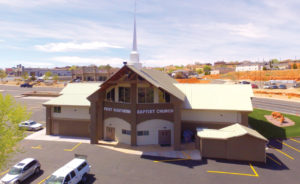
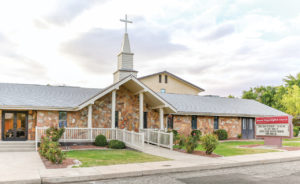
Outnumbered and under-membered, two Southern Baptist churches in St. George and neighboring Washington, Utah, incorporating members from a third church, work together in Kingdom-building to bring living water to the people who live in the parched and starkly beautiful southwestern corner of the state near the Utah-Arizona-Nevada state lines.
This includes the sacrificial sale of First Southern Baptist Church’s St. George facility to Desert Ridge Baptist Church; membership transfers from The Narrows to Desert Ridge; the churches’ joining forces to minister in various joint ventures; and the support of each other in church-distinct ministries.
The Narrows closed in August following the bivocational pastor’s need to devote his energies for primary care of his wife and seventeen-year old son, both of whom were recently diagnosed with cancer.
“We talked when we first got here that we wanted to be Kingdom pastors and not empire-building pastors,” John Fields, First Southern’s pastor, told SBC LIFE about Michael Waldrop, Desert Ridge’s pastor. “What has been accomplished in the churches working together is of the Lord, and we boast only in Him and in His work.”
Each church has its unique identity. First Southern Baptist in Washington is mature and traditional while Desert Ridge Baptist is young and exuberant. The Narrows Church had focused on its target audience: Mormons.
John Fields was called from Maryland as First Southern’s pastor in April 2011. Michael Waldrop was called from Mississippi to start Desert Ridge in May 2011. James Hazelton, from Washington state, had been in the area since 1995 as a bivocational and self-taught missionary to Mormons. He connected with Southern Baptists in 2005 and in October 2011 had started The Narrows Church.
“These seven years have been challenging,” said Waldrop, primary preaching pastor at Desert Ridge. “We’re located in the third-most unreached metro area in the United States, and it’s not a population that is unattached. A large portion of Washington County residents are members of the LDS [Church of Jesus Christ of Latter-day Saints, also known as Mormon] system, and a lot of them are not looking to move.
“But a lot are,” the Desert Ridge pastor continued. “The challenge has been in establishing unity in the purity of God’s word. That’s what a church does to establish God and His Word, His purposes, and the way He wants things done. It’s always a blessing to see God doing that.”
Kingdom Advance
First Southern was given an oversized former restaurant last year—albeit with the need to make more than a half-million dollars in renovations. Rather than selling for top dollar its old property a block from Dixie State University, First Southern sold it to Desert Ridge for less than a third of its value, interest-free, with a $5,500 down payment and a monthly mortgage the new church could afford.
“Just as we were growing, so was Desert Ridge,” Fields said. “Our attendance was the highest-ever for three years. We had begun to plateau and Desert Ridge, too. We were all praying.”
Desert Ridge, meeting in a storefront, had room for worship for about eighty people, but virtually no Sunday School space. One class was meeting in a former storage closet. Financially, however, the seven-year-old church—though self-supporting since its fourth year as a church plant—wasn’t ready to dive into a building program.
“Becoming aware of First Southern’s and Desert Ridge’s need for space, a Southern Baptist businessman from Texas, who had visited our area briefly, sent a sizeable donation as seed money to help fulfill our vision for growth,” Fields said.
“The Lord put it on my heart that our building had been used by Him for more than forty years,” the First Southern pastor added. “I didn’t want to sell it to a secular organization, and Desert Ridge needed more space but didn’t have the financial resources they needed. God worked out the details.”
First Southern used its available funds and the sacrificial giving of its congregation for renovations, and both churches moved into their new facilities last winter. Since then, both have experienced record attendance and sizable growth: First Southern, to about two hundred, up from 140 last year, and Desert Ridge, to about eighty-five, up from sixty-eight last year.
“It’s a Kingdom mindset they had,” Waldrop said about First Southern. “They wanted to see the Gospel continue to be proclaimed from this location, right in front of Dixie State University’s new student center.”
Joint Ventures
While talking in monthly get-togethers about six years ago, the three St. George pastors developed a plan to better reach the needs of the ten thousand students at Dixie State University.
The “Ignite Young Adult Christian Fellowship” takes place the second and fourth Sunday nights of each month at Desert Ridge, located a block from the school’s main campus. With supportive leadership of the churches, the evening starts with a home-cooked meal prepared by women from First Southern.
Fellowship, a team-building game, worship, a Bible lesson taught by Fields, and prayer all are part of the evening that draws up to forty college students and other young adults.
The pastors also started “Connect 180,” a ministry to area teens. “A couple of years ago we were seeing a need for our youth to be encouraged,” Fields said. “We had two youth, and wanted them to realize they’re not the only young Christians out there.”
The “Connect 180” group has grown to include about twenty teens, who meet the first and third Sundays of each month at Desert Ridge, with each evening’s leadership passing among the pastors. Time is allocated for fellowship, Bible study, snacks, games, and music.
A third joint venture, the Mormon Evangelism Training Conference, which took place September 7–8, was a two-day event designed “to increase the awareness of the need to evangelize as well as to increase the effectiveness of our witness to Mormons,” Waldrop said. Desert Ridge was the lead church in this, with support from First Southern and The Narrows Church as a final act of ministry before closing its doors and merging its congregation with Desert Ridge. This followed three years of the churches working together in The Narrows’ “Reasonable Questions Conference,” an effort to invite Mormon neighbors to hear biblical teaching on spiritual issues.
Distinct Personalities
First Southern, established in 1969, provides age- and gender-appropriate ministries for every group in the church, including ESL classes, the new Red Rock Boys Club, Girls Route 66 group, Mexico mission trips, and local community outreach.
Desert Ridge offers multiple backyard Bible clubs throughout the summer led by mission teams from Texas, Mississippi and Alabama, has a growing ministry to the nearby Paiute Indian reservation, has started a Hispanic ministry in St. George, and takes mission trips to Honduras.
Though the Narrows Church closed its doors, Hazelton continues to maintain his 2ndTimothy215.com website while working at a call center to support his family.
This website offers “A Closer Look,” 35-minute episodes that examine Scripture to explain the disparity between LDS teaching and the Bible. Hazelton does the research, teaching, videotaping, and uploading of each monthly video.
The Cooperative Program is an essential component of Kingdom-building, the pastors said.
More than 15 percent of First Southern’s regular budget is allocated for Great Commission missions, the Cooperative Program and Color Country Baptist Association. Desert Ridge gives 4 percent through the Cooperative Program, 5 percent to Color Country Baptist Association and 1 percent for local missions. The Narrows had given 10 percent through the CP its last two years.
“One of the reasons we’re big in the Cooperative Program is that I’ve never felt called to foreign missions,” Hazelton told SBC LIFE. “Utah is my mission field. I trust the Cooperative Program to take care of the rest of the world.”
“One of the things we have to realize is that we are on the mission field,” Waldrop said. “We recognize we [church members] are the missionaries . . . and we instruct our people to look for Gospel opportunities in their daily lives. That’s our number one way of outreach.”



